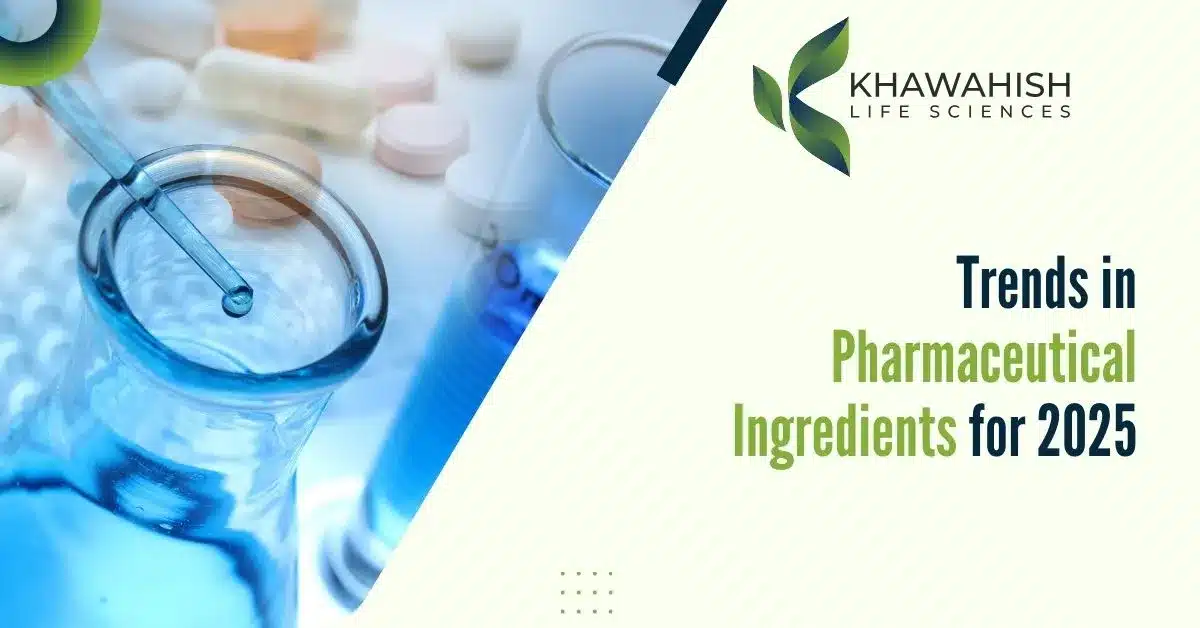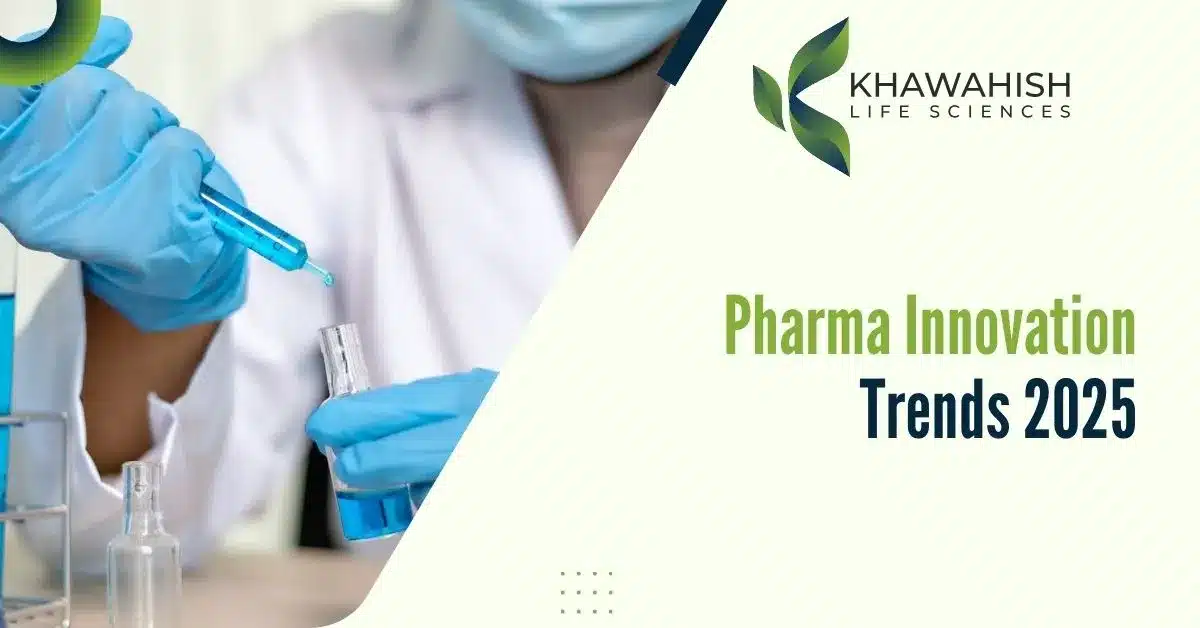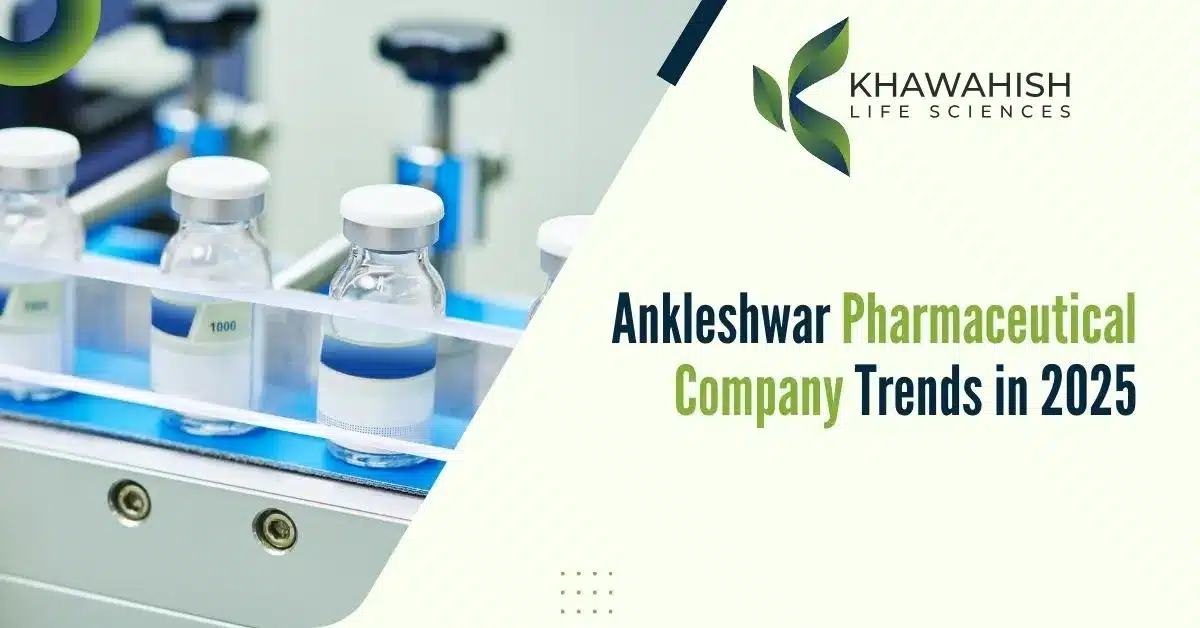
The pharmaceutical industry is undergoing a major transformation in 2025. With increased focus on sustainability, patient-centric solutions, and digital innovation, the way pharmaceutical ingredients—including Active Pharmaceutical Ingredients (APIs) and excipients—are developed and used is changing fast.
As global demand for effective and safe medications grows, pharma companies must stay ahead by embracing new trends that shape formulation science, ingredient sourcing, and regulatory compliance.
Top 7 Trends in Pharmaceutical Ingredients
Let’s explore the most significant trends driving the evolution of pharmaceutical ingredients in 2025.
1. Rise of Biopharmaceutical APIs
Traditional small-molecule APIs are making room for a new wave of biopharmaceutical APIs, especially in treating cancer, autoimmune diseases, and rare disorders. These are large, complex molecules derived from living organisms.
Key Highlights:
- Growing demand for monoclonal antibodies, peptides, and gene therapies.
- Expansion of biosimilar development pipelines.
- Increase in contract manufacturing for biologics.
Why it matters: Biopharma APIs offer high precision and targeted action, but they require advanced manufacturing and storage capabilities.
2. Green Chemistry and Eco-Friendly Manufacturing
In 2025, sustainability is not a trend—it’s a necessity. Green chemistry is revolutionizing how APIs and excipients are synthesized by reducing environmental impact.
What’s Changing:
- Use of biodegradable solvents and enzyme catalysts.
- Adoption of waste-reducing synthesis pathways.
- Focus on eco-certifications and carbon footprint transparency.
Benefit: Lower waste, reduced toxic emissions, and regulatory advantages for compliant manufacturers.
3. Regulatory Evolution and Quality-Centric Design
Regulatory bodies like the FDA and EMA are placing more emphasis on ingredient quality, traceability, and documentation.
2025 Compliance Expectations:
- Good Manufacturing Practices (GMP) adherence for all suppliers.
- Data-driven QbD (Quality by Design) implementation.
- Real-time quality monitoring using Process Analytical Technology (PAT).
Result: Safer drugs, fewer recalls, and faster approvals.
Want expert support for cutting-edge pharmaceutical ingredients? Contact us to get started.
4. AI and Digital Tools in Ingredient Discovery
Artificial intelligence (AI) is now a crucial part of pharmaceutical R&D. From identifying druggable molecules to predicting how excipients interact with APIs, AI speeds up formulation and reduces risk.
Applications:
- AI tools for solubility prediction, stability modeling, and toxicology assessment.
- Virtual screening for excipient compatibility.
- Machine learning-based formulation optimization.
Impact: Faster time to market and cost savings across development cycles.
5. Innovation in Excipients for Complex Drug Delivery
Excipients are no longer passive fillers. In 2025, they play an active role in drug delivery, absorption enhancement, and patient adherence.
What’s Trending:
- Lipid-based excipients for poorly soluble drugs.
- Co-processed multifunctional excipients to streamline manufacturing.
- Excipients for pediatric, geriatric, and oncology formulations.
Outcome: Enhanced bioavailability, improved stability, and better therapeutic outcomes.
6. Localized API Sourcing and Supply Chain Diversification
The global supply chain disruptions from recent years have led to a push for self-reliant and localized pharmaceutical ingredient manufacturing.
Industry Response:
- Governments investing in API parks and clusters.
- Pharma companies shifting to dual sourcing strategies.
- Use of blockchain for ingredient traceability.
Goal: Secure, ethical, and transparent ingredient supply chains.
7. High-Performance Ingredients for Complex Generics
As the demand for complex generics and niche therapies increases, APIs and excipients must meet stricter performance criteria.
Examples:
- Micronized APIs for inhalers and transdermal systems.
- Matrix-forming excipients for controlled release.
- Taste-masking agents for oral dispersible tablets (ODTs).
Significance: Keeps generics competitive while meeting rising patient expectations.
Frequently Asked Questions
- What are the top pharmaceutical ingredient trends in 2025?
The key trends include the rise of biopharmaceutical APIs, increased use of green chemistry, AI-driven formulation tools, and innovative excipients that enhance drug delivery and patient outcomes. - How is green chemistry impacting pharmaceutical ingredient manufacturing?
Green chemistry is making pharmaceutical manufacturing more sustainable by reducing harmful solvents, minimizing waste, and introducing eco-friendly processes that align with global regulatory expectations. - Why are biopharmaceutical APIs gaining popularity in 2025?
Biopharmaceutical APIs, such as monoclonal antibodies and peptides, offer targeted treatment options for complex diseases. Their growing use is driven by advancements in biotechnology and personalized medicine.
Conclusion
In 2025, the pharmaceutical ingredients landscape is defined by innovation, quality, and sustainability. Whether it’s adopting green chemistry, investing in biopharmaceutical APIs, or integrating AI into formulation, companies that embrace these trends will be best positioned to lead in the global pharmaceutical market.
Staying updated isn’t just about compliance—it’s about delivering better, safer, and more accessible medicines to patients worldwide.

